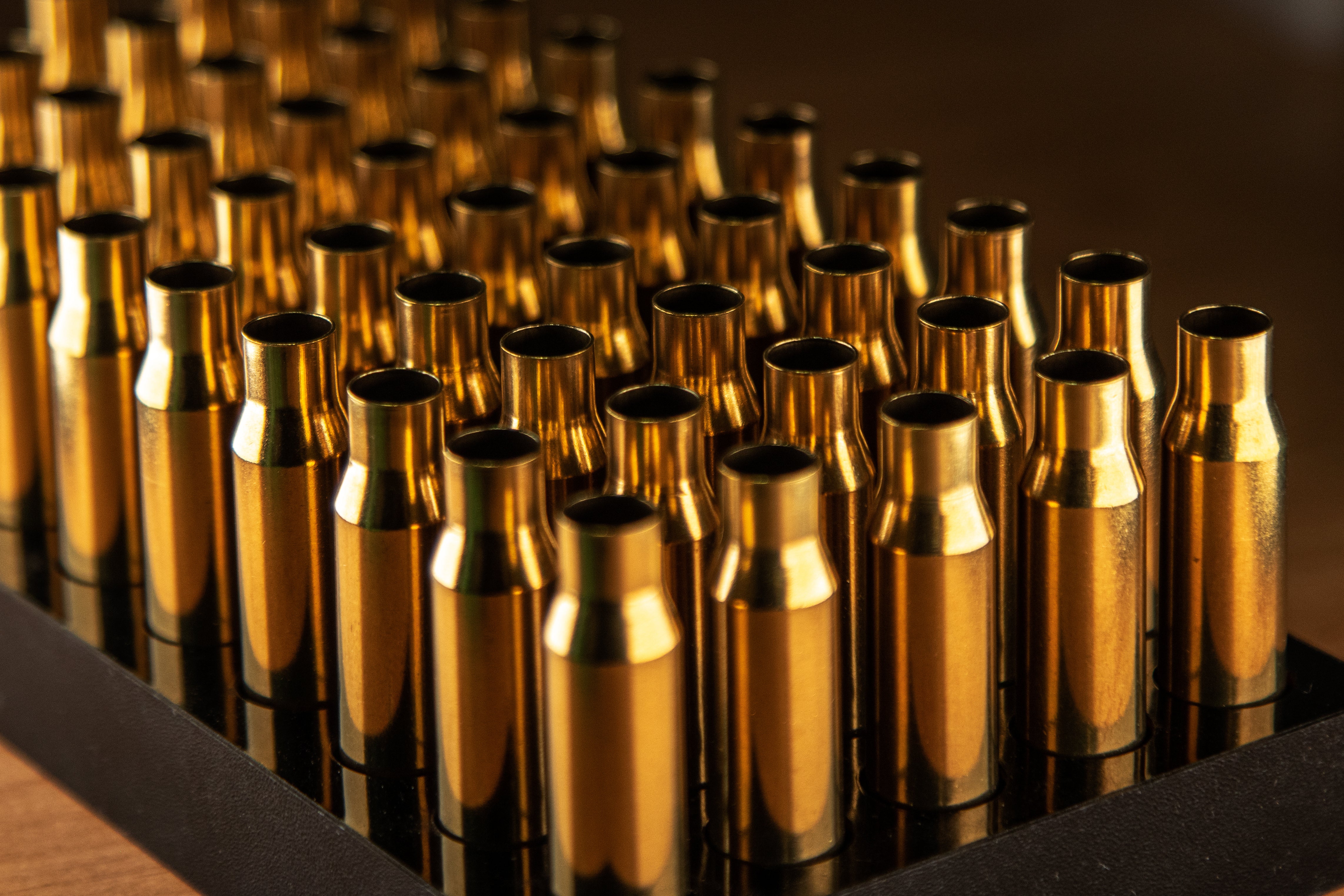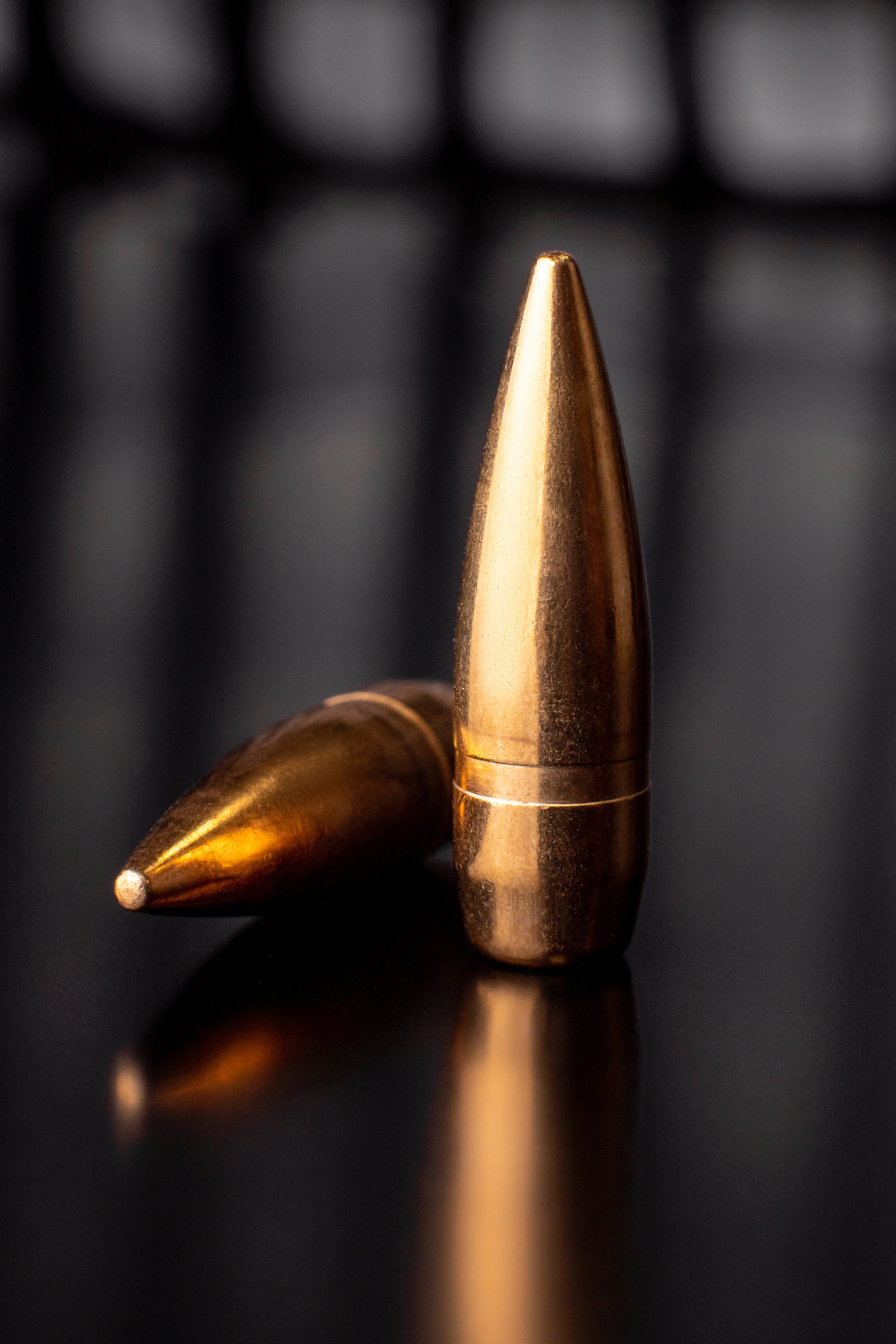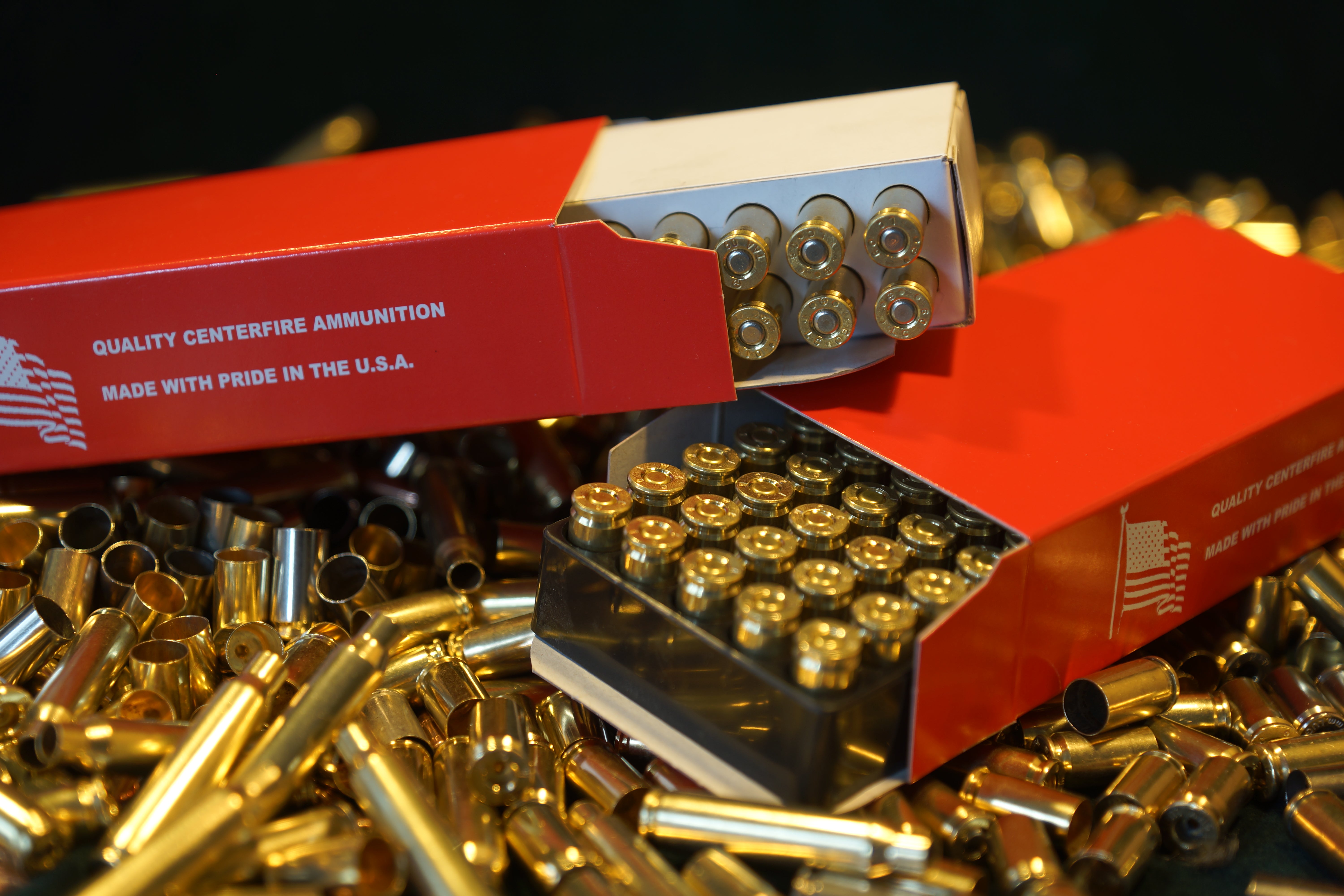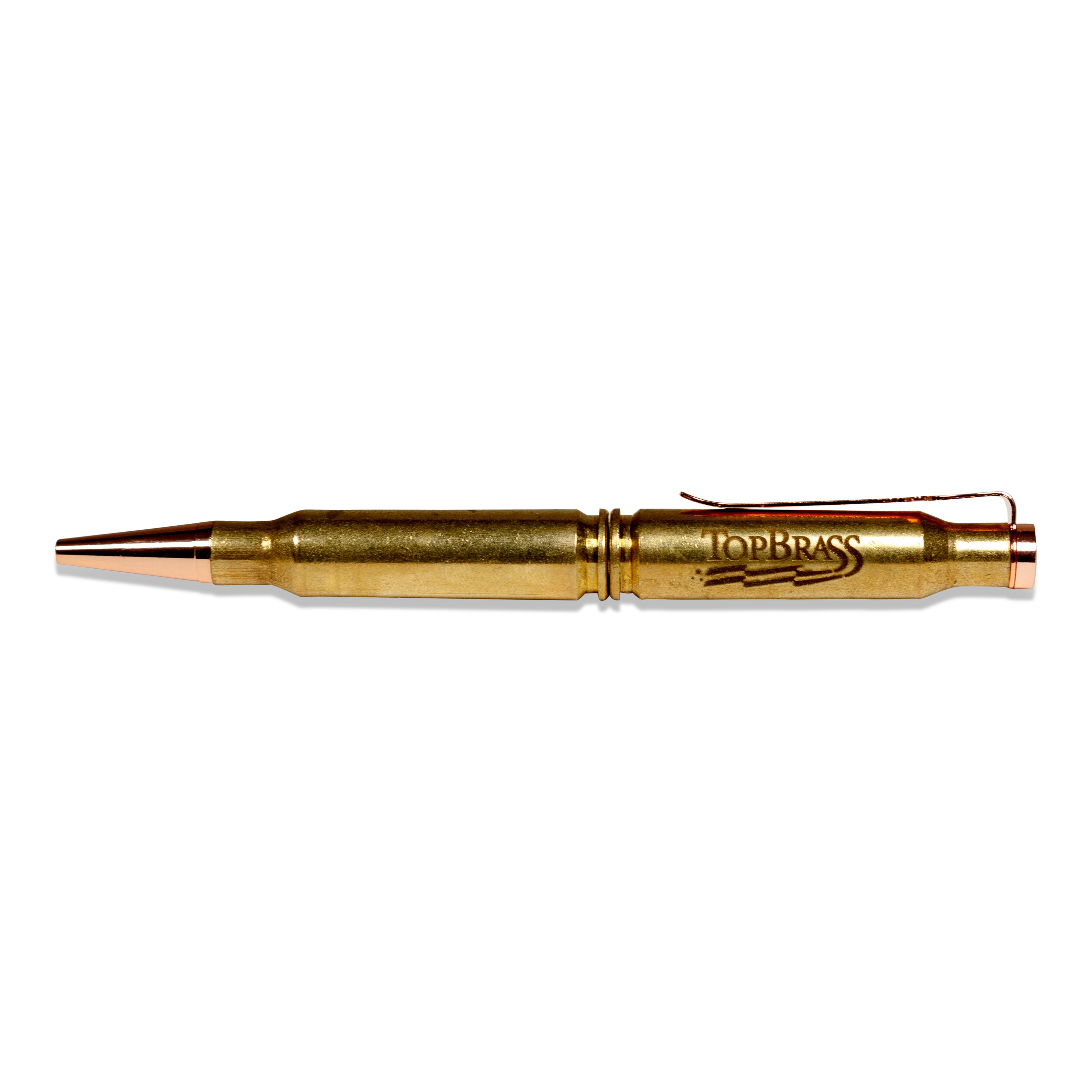Menu

The Reloader's Dictionary
A | B | C | D | E | F | G | H | I | J | K | L | M | N | O | P | R | S | T | V | W | Y | Z
A
ACP -- Abbreviation for ‘Automatic Colt Pistol.’
Action -- The portion of a firearm where the cartridge is loaded, fired, and unloaded.
Aerodynamic Jump -- The vertical shift a projectile experiences as it encounters crosswind.
Ammunition -- An assembly of components used to discharge a firearm and propel a projectile down target (bullet, primer, cartridge case, and powder).
Ammunition, Small Arms -- A military term for ammunition used in firearms with barrel bores no larger than one inch in diameter.
Anneal -- The process of heating (and softening) metal (brass) to restore ductility (tensile stress) after it has been fired.
Antimony -- A metal alloy used to harden lead for bullets (approx. 3%).
Anvil -- The metal point upon which the firing pin drives the explosive compound of the primer, creating an ignition spark.
Back to TopB
Ballistics -- The physical science of projectiles in motion. Firearms include: interior ballistics; exterior ballistics; and terminal ballistics.
Ballistic Coefficient -- The calculated aerodynamics (atmospheric resistance) of a bullet after its been fired and before it reaches target -- a mathematical index for deceleration of a projectile in flight.
Balloon Head -- When the primer on a cartridge case extends into the powder chamber – should not be reloaded.
Bearing Surface -- The surface area of a bullet that makes direct contact with the rifling of a barrel (lands and grooves).
Bedding -- The material and/or method for fitting a barrel and action to a rifle stock.
Belted Case -- Any cartridge case (typically rifle) that possesses a raised belt (or band) around its base past the extractor groove to insure positive headspacing for ‘non-shouldered’ magnum cartridges.
Berdan Primer -- A primer used in most European cartridges (without Anvil).
Black Powder -- Potassium Nitrate, Charcoal, and Sulphur – typically used in modern muzzle-loading firearms.
Boat Tail -- The tapered area of a bullet at the base-end (heel) that produces less atmospheric resistance (drag) during flight.
Bore -- The interior portion of the barrel, forward of the chamber.
Bore Axis (Line of Bore) -- The invisible line passing through the center of the barrel (infinite aim of barrel).
Bore Capacity -- The term used to describe the volume of the bore as it relates to its ability to effectively burn a given amount of powder (‘Burn Rate’ effectiveness).
Boxer Primer -- A primer used in most American cartridges (with Anvil).
Brass -- A metal alloy comprised of copper and zinc. The word is used in reference to the cartridge case, as well as a general term for ammunition.
Bridging (Powder Bridging) -- When a powder measure accumulates in the drop tube, causing uneven loads.
Bullet -- The projectile shot from a firearm – accuracy is dependent on center of gravity concentric with center of form.
Bullet Pull -- The amount of force (typically in pounds) necessary to pull a mounted bullet from a cartridge (also, ‘Neck Tension’).
Burn Rate -- The time it takes, as compared to a known general standard, for powder to burn on ignition.
Back to TopC
Caliber -- The diameter of a given projectile, either in inches or millimeters.
Cannelure -- A groove around the cylindrical portion of a bullet into which the edge of the cartridge is crimped.
Cartridge -- A single unit of complete ammunition for small arms, consisting of bullet, powder, casing and primer (‘Round’).
Case Forming -- The process of reforming a cartridge case into a usable, pre-specified case dimension for reloading. The process can be done via press dies and / or fireforming.
Chamber -- The part of the barrel that accepts the ammunition for firing.
Chamfer -- The process of removing burrs on the inside of a cartridge case to insure proper bullet seating (also, ‘Deburr’).
Charge -- The amount of powder loaded into a cartridge case when producing ammunition.
Compressed Charge -- When the seating of a bullet is compressed into the powder – typical for slow burning powders in large capacity magnums.
Crimp -- The process of edging-in the mouth of a cartridge case to increase the tension and better secure the bullet.
Crimped Primer -- When the primer is crimped into the primer pocket – typical for military cases.
Back to TopD
Decap -- The removal of a ‘spent’ primer from a cartridge case.
Dummy -- A round of ammunition that is inert.
Duplex Load -- A powder load consisting of two different types to maximize the efficiency of burn rates – typically fast burn rates near primer and slower burn rates for main charge.
Back to TopE
Erosion (Throat Erosion) -- The wearing of parts (usually the throat of the barrel) due to extreme heat and friction commonly caused from hot-burning powders, over-firing and / or large capacity loading.
Expanding Bullet -- A bullet that is designed to expand on impact, thus creating a more lethal contact with the target – typical types include hollow points and soft points.
Expansion Ratio -- The calculated ratio of the case volume and bore volume to the case volume alone – denotes powder burning efficiency.
Exterior Ballistics -- The physical science associated with the flight of a projectile.
Back to TopF
Fireform -- The process of reforming a cartridge case by firing it, thus improving the fit to chamber for a particular firearm.
Firing Pin (Striker) -- The part of a firearm that the trigger mechanism releases to strike the primer of a cartridge to detonate it.
Flash Hole -- A hole (or holes) between the primer pocket and the powder chamber of a cartridge case.
Flat Nose -- A bullet design that possesses a broad, flat meplat -- typical for tubular magazines that align rounds nose to primer.
FMJ (Full Metal Jacket) -- A bullet design that encases the softer lead core bullet with a harder, outer metal covering – typically gilding metal.
Fouling Shot -- An initial shot fired through a clean bore to intentionally leave residue so as to prepare the bore for improved consistency and performance in subsequent shots.
Frangible -- A bullet designed to disintegrate into small particles upon impact -- typically used for safety reasons to minimize bullet penetration.
Back to TopG
Galling -- The roughness and degradation of two metals as they rub together due to friction.
Grain -- A unit of measure defining the weight of a bullet (7,000 grains per 1 lb.).
Gilding Metal -- A metal alloy (approx. 90% copper, 10% zinc) used for ‘jacketing’ bullets.
Back to TopH
Half-Jacket -- A swaged lead bullet that has a jacket covering half of the bullet with the remainder of lead exposed.
Hangfire -- A delay in time between the striking of the firing pin and the ignition of cartridge.
Head Separation -- A circumferential cracking of the cartridge case – typically caused by excessive headspace during firing.
Headspace -- The distance measured from the part of the chamber that stops forward motion of the cartridge to the face of the bolt.
Headstamp -- The designated markings on the head of a cartridge case that designate the manufacturer, caliber, and / or date of manufacturer.
Heel -- The portion of a bullet that’s between the main body and the base (the edge of the bullet’s base).
High Primer -- A primer that is seated above the head of the cartridge case (non-flush) – a defect that makes the cartridge dangerous as it becomes susceptible to ‘slam fires’ during autoloading, etc.
Hold Over -- The distance a shooter must raise his point of aim to be on target when zeroed-in at a lesser distance.
Hollow Point -- A type of bullet that possesses an opening in the nose, thus allowing the projectile to expand upon impact.
Back to TopI
Ignition Time -- The time span it takes between the firing pin ignition of the primer and the pressure increase to move the bullet from its seat within the cartridge case.
Improved -- The term used for a cartridge that has been fireformed and now possesses a contoured shape for improved headspacing.
Ingalls’ Tables -- Ballistic tables computed by Col. James Ingalls of the US Army – calculates velocities and trajectories for small arms projectiles.
Interior Ballistics -- The physical science associated with the events of a projectile as it moves through the interior (chamber / barrel) of a firearm.
Back to TopJ
Jacket -- An outside metal cover that encloses the soft lead core of a bullet (a metal sheath).
Back to TopK
Keyhole (Keyholing) -- Refers to an elongated hole left in a target by a projectile that is not traveling point-on, thus indicating a ballistics stability problem.
Back to TopL
Lands -- The internal bore dimensions above the grooves in a rifled barrel.
Leade (‘Freebore’) -- The unrifled area of the barrel bore immediately in front of the chamber.
Leading -- A build-up or accumulation of lead in a barrel of a firearm due to cast or swaged bullets – typically lessens accuracy to a substantial degree.
Line of Elevation -- The angle represented from the ground (zero degrees) to the Axis of the Bore.
Line of Sight (LOS) -- The invisible line from the firearm sights (or optics) and the target (what the shooter sees).
Load Density -- The percentage of the powder load (volume) to the powder chamber (volume) of the cartridge case.
Lock Time -- The amount of time (milliseconds) between pulling the trigger and ignition of the powder in the cartridge.
Back to Top
M
Magnum -- A cartridge designed with greater powder capacity than its earlier standard.
Match Grade -- The manufactured quality that is suitable for a competitive match – typically with specifications that possess tighter tolerances and meet better accuracy.
Maximum Ordinate -- The maximum height a projectile travels (above the Line of Sight) on its path to impact.
Mean Radius -- The average radius of a group of shots from the center of the group.
Meplat -- The diameter of the flattened tip of the nose of a bullet.
Misfire -- When a cartridge fails to fire after being struck by firing pin.
MOA (Minute of Angle) -- The measured angle equal to 1/60th of a degree, or approximately one inch at 100 yards (1.0472”).
Muzzle -- The end of the barrel.
Muzzle Energy -- The kinetic energy associated with a projectile as it leaves the muzzle of a firearm.
Muzzle Pressure -- The pressure remaining in the barrel after the projectile leaves the muzzle.
Muzzle Velocity -- The speed that a projectile is traveling when it leaves the muzzle of a firearm.
Back to TopN
Neck -- The portion of the cartridge case between the main body and the mouth of the case – typically funnel shaped.
Necking Down or Necking Up -- The process of resizing the neck (shrinking or expanding) of an existing cartridge case to fit the bullet of a different caliber.
Back to TopO
Obturation -- The process of sealing the chamber and bore through pressure.
Ogive -- The pointed, curved surface (the arc) that forms the nose of a bullet, thus creating the aerodynamics to reduce atmospheric resistance (drag).
Overbore Capacity -- When a cartridge contains more powder than can be burned for the bore diameter and volume.
Back to Top
P
Penetration -- The ability of a projectile to enter a target’s mass based on its delivered kinetic energy – typically measured in inches via ‘Impact Depth.’
Pierced Primer -- A primer which is pierced by the firing pin – typically due to excessive high pressures.
Point Of Impact (POI) -- The point at which a projectile strikes it’s target in relation to the point where the shooter is aiming.
Popped Primer (Protruding Primer) -- An outward displacement of the primer after firing – typically due to excessive headspace in conjunction with a light load.
Pressure -- The force exerted from the expanding gas generated by the combustion of the powder – measured in pounds per square inch (PSI).
Primer -- The ignition component that sparks the powder.
Primer Leak -- When gas escapes between the primer and the primer pocket due to excess pressure.
Primer Pocket -- The cavity at the base of a cartridge case that holds the primer.
Primer Pocket Reaming (Swaging) -- Removing the crimp in a primer pocket.
Proof -- Testing a firearm’s ability to withstand working (and excess) pressures and strains (determining ‘extra’ strength and safety margins for a firearm).
Back to TopR
Remaining Velocity -- A projectile’s velocity (feet per second) at a given range of fire.
Resizing -- The process of returning a fired cartridge case back to dimensions in which it can be rechambered and re-fired – typically through the use of a resizing die.
Reticle -- The system of aiming as found in firearm optics (crosshairs, lines, dots, etc.).
Rifling -- The process of cutting (or forming) spiral grooves into the bore of a barrel, thus creating a spin to the fired projectile.
Round Nose -- A type of bullet possessing a blunt, round profile.
Rimmed Case -- A cartridge case with a flange on its base – used for extraction and a means for headspacing.
Back to TopS
Sabot -- A designed cover (sheath) that allows a smaller bullet to be used in a larger bore barrel.
SAAMI -- Sporting Arms and Ammunition Manufacturers Institute.
Seating -- The placement of a bullet within a cartridge case.
Secant Ogive -- A bullet with a design whereby the cylindrical surface is secant to the curve of the head.
Shoulder -- The portion of a cartridge case located between the neck and the body.
Slam Fire -- When a firearm discharges during chambering.
Soft Point -- Any jacketed bullet with an exposed lead tip.
Spire Point -- A cone-shaped bullet, as opposed to an arch-shaped (ogival) bullet.
Squib Load -- A firearm malfunction whereby the projectile remains lodged within the barrel – typically due to low pressure firing.
Swage -- The process of forming metal under pressure – typically with a die or punch.
Back to Top
T
Tangent Ogive -- A bullet with a design whereby the cylindrical surface is tangent to the curve of the head.
Terminal Ballistics -- The physical science associated with a projectile’s impact on a given target.
Time Of Flight -- The time it takes for a projectile to reach a given distance after firing.
Throat -- The unrifled portion of a barrel that’s located between the chamber and the rifled portion of the barrel (‘Freebore’).
Trajectory -- The arced (or parabolic) path a projectile takes during flight.
Twist Rate -- The distance (inches) a projectile travels during a single rotation as created by the barrel’s rifling (ex. 1:10 T = one revolution in 10” as it leaves the muzzle).
Back to TopV
Velocity -- The speed of a projectile – typically expressed as feet-per-second (FPS).
Back to Top
W
Wadcutter -- A bullet designed for paper targets – typically with a flat nose (or near flat) in order to leave a clean hole for easy scoring.
Web -- The part of a cartridge case between the primer pocket and the powder chamber where the flash hole is located.
Wildcat -- A custom cartridge that is not mass produced – typically made to optimize a specific performance characteristic.
Windage -- The lateral (side-to-side) adjustment for firearm sights – compensation for wind drift.
Wind Deflection -- The lateral (side-to-side) effect on a bullet in flight caused by crosswind.
Work Hardened -- The eventual brittleness of a cartridge case due to repeated stress on the metal caused from repeated firing and reloading – typically around the neck of the case resulting in cracking and splitting.
Back to TopY
Yaw -- The directional drifting (‘Drift’) of an in-flight projectile due to the spinning of the projectile.
Back to TopZ
Zero Point (Zero or Far Zero) -- Where the point of aim and the point of impact coincide.
- Choosing a selection results in a full page refresh.




